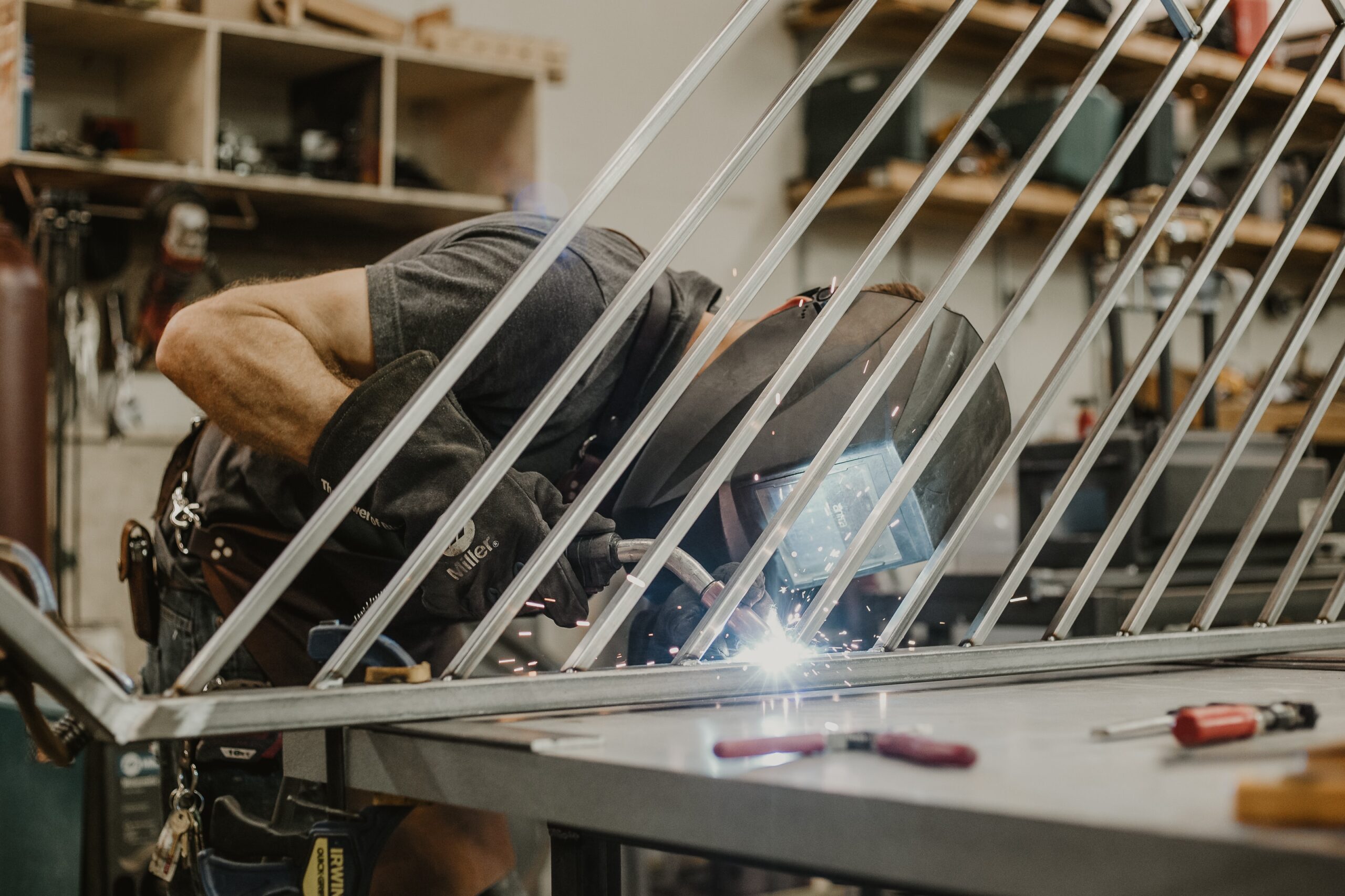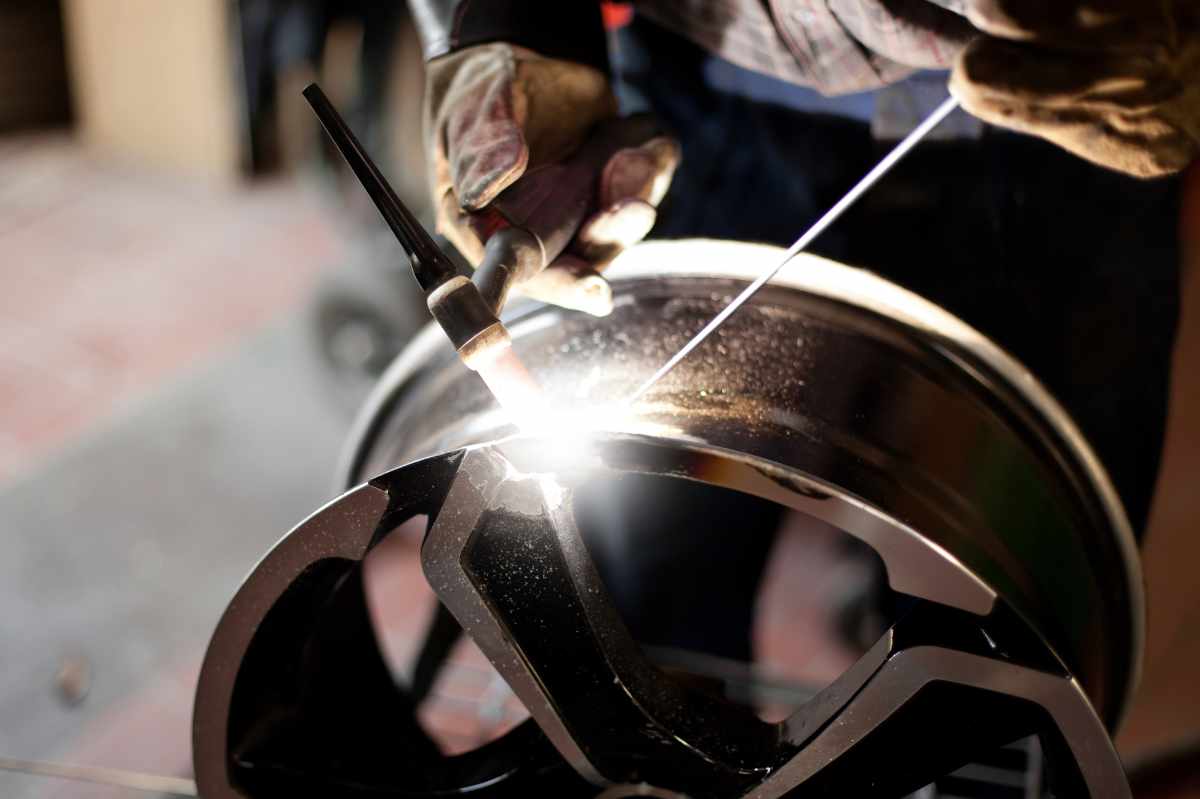Everything about Welding: Key Insights Into Techniques and Finest Practices for Success
Welding includes a range of techniques, each suited for particular products and applications. Comprehending these techniques, such as GMAW, SMAW, and TIG, is crucial for accomplishing optimal results. The ideal equipment and safety and security techniques can not be neglected. As preparation and fixing play critical roles in the welding procedure, grasping these elements can significantly boost the high quality of the end product. What are the vital aspects that guarantee an effective weld?
Understanding Various Welding Methods
Welding methods include a range of approaches, each suited to details applications and materials. Among one of the most usual techniques are Gas Metal Arc Welding (GMAW), Secured Metal Arc Welding (SMAW), and Tungsten Inert Gas Welding (TIG) GMAW, additionally called MIG welding, is prominent for its rate and adaptability, making it perfect for thin products. SMAW, or stick welding, is favored for its simpleness and performance in outdoor environments, specifically with thicker steels. TIG welding provides precision and control, making it appropriate for complex job and non-ferrous metals (Montana Mobile Welding and Repair Belgrade Fabrication). Each technique has its distinct benefits and considerations, enabling welders to choose the most effective method based upon the project's needs, material kind, and desired results. Understanding these strategies is crucial for successful welding
Important Welding Tools and Devices
While various welding strategies need details skills, the right devices and tools are equally crucial for achieving quality outcomes. Vital welding equipment consists of welding machines, which vary depending on the technique-- such as MIG, TIG, or stick welding. Safety equipment, including gloves, aprons, and headgears, guarantees safety and convenience during the procedure. Furthermore, components and clamps assist secure materials in position, guaranteeing accuracy in welds. Consumables like welding rods, wire, and shielding gas are likewise critical parts that influence the high quality of the weld. Moreover, devices such as grinders and cutters help with surface area preparation and post-weld finishing, adding to a specialist result. Purchasing high-grade devices eventually improves the effectiveness and efficiency of welding tasks.
Safety Practices in Welding
Correct safety and security methods are essential in the welding industry to shield employees from possible hazards. Welders have to use proper personal safety equipment (PPE), including headgears with proper shading, gloves, and flame-resistant apparel. Ample air flow is essential to decrease direct exposure to hazardous fumes and gases produced throughout the welding process. Furthermore, employees should be trained in the proper handling of welding devices to avoid accidents. Fire security steps, such as maintaining flammable materials far from the welding location and having fire extinguishers readily offered, are necessary. Normal inspections of tools and workspaces can help recognize prospective risks prior to they lead to mishaps. By sticking to these security practices, welders can develop a more secure working atmosphere and lessen threats related to their trade.
Readying Products for Welding
Preparing products for welding is a vital step that considerably affects the quality and integrity of the end product (Montana Mobile Welding and Repair). Proper prep work entails cleansing the surface areas to eliminate pollutants such as corrosion, oil, and dirt, which can jeopardize the weld. Methods such as grinding, sanding, or making use of solvents are commonly employed to attain a tidy surface area. Furthermore, guaranteeing that the products mesh well is crucial; voids can lead to weak welds. It's also essential to take into account the placement and positioning of the elements, as this will affect the simplicity of welding and the last end result. Selecting the appropriate filler material and making certain compatibility with the base steels is necessary for achieving solid, durable welds.
Tips for Getting High-Quality Welds
Attaining top quality welds needs attention to information and adherence to ideal methods throughout the welding process. Appropriate joint prep work is crucial, making sure surfaces are clean and totally free from contaminants. Selecting the suitable filler material and welding technique based upon the base steels is essential for ideal bonding. Maintaining consistent travel speed and angle while welding can advertise and prevent defects harmony. Additionally, managing heat input is vital; too much warm can cause bending and damaged joints. If required, routinely examining the welds during the procedure permits for prompt adjustments. Lastly, utilizing appropriate post-weld treatments, such as cleaning and stress and anxiety alleviation, can improve the longevity and honesty of the weld, eventually ensuring a successful end result.
Troubleshooting Typical Welding Issues
Welding typically presents obstacles that can influence the quality and integrity of the end product. Typical concerns such as porosity, irregular weld beads, and getting too hot can arise, each calling for certain fixing strategies. Recognizing these problems is important for welders to improve their abilities and achieve suitable results.
Porosity Issues Described
Porosity can frequently be neglected, it continues to be an essential problem in welding that can jeopardize the stability of an ended up product. Porosity refers to the visibility of little gas pockets within the weld grain, which can weaken the joint and lead to early failure. This problem commonly develops from impurities, moisture, or inappropriate protecting gas insurance coverage throughout the welding process. To minimize porosity, welders need to verify that the base products are completely dry and tidy, use appropriate protecting gases, and keep consistent welding specifications. On a regular basis evaluating the devices and environment can additionally help identify prospective problems before they materialize in the weld. Dealing with porosity efficiently is necessary for accomplishing strong, long lasting welds that satisfy high quality criteria.

Inconsistent Weld Beads
Irregular weld grains can considerably impact the quality and toughness of an ended up product. Various factors add to this concern, consisting of incorrect traveling rate, incorrect amperage setups, and irregular electrode angles. When the welder relocates too quickly, a grain may show up slim and visit this web-site lack penetration, while relocating too gradually can cause too much build-up. Furthermore, using the incorrect amperage can cause either damaging or too much spatter, both of which compromise weld honesty. The welder's technique, such as inconsistent torch activity, can also result in unequal grain look. To minimize these troubles, welders must concentrate on maintaining stable, controlled activities and making certain proper equipment setups to accomplish harmony in their welds. Uniformity is crucial to accomplishing reliable and solid welds.
Getting Too Hot and Bending Issues
Excessive heat throughout the welding process can bring about considerable getting too hot and contorting issues, impacting the architectural integrity of the work surface. These issues typically show up as distortion, which can compromise alignment and fit-up, making further setting up challenging. Factors adding to overheating consist of the choice of welding parameters, such as voltage and take a trip rate, in addition to the type of material being welded. To reduce these problems, welders ought to keep consistent travel speed and appropriate heat input while keeping track of the work surface temperature. Additionally, pre-heating or post-weld warm therapy can assist alleviate stresses caused by quick cooling - Montana Mobile Welding and Repair Welding. Normal examination and adherence to finest techniques are necessary in preventing overheating and ensuring the longevity and integrity of bonded frameworks
Often Asked Concerns
What Are the Occupation Opportunities in the Welding Market?
The welding industry offers diverse occupation chances, including placements as welders, instructors, engineers, and examiners. Experts can operate in production, building and construction, aerospace, and automobile industries, profiting from strong need and competitive incomes in different functions.
Just How Can I Boost My Welding Rate Without Sacrificing Quality?
To improve welding speed without compromising high quality, one must exercise reliable methods, preserve tools, optimize settings, and boost hand-eye control. Normal training and seeking comments can likewise considerably add to achieving much faster, premium welds.
What Accreditations Are Offered for Welders?
Many qualifications exist for welders, consisting of those from the American Welding Society (AWS), the National Facility for Building Education and Research Study (NCCER), and numerous industry-specific organizations. These qualifications improve employability and show skill efficiency.
How Does Welding Affect the Features of Metals?
Welding influences the residential properties of steels by modifying their microstructure, which can bring about modifications in stamina, firmness, and ductility. Heat input and air conditioning rates during the procedure considerably affect these product qualities.
Can I Bonded Dissimilar Metals With Each Other?
